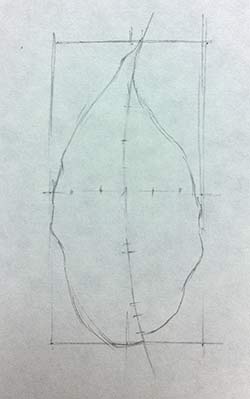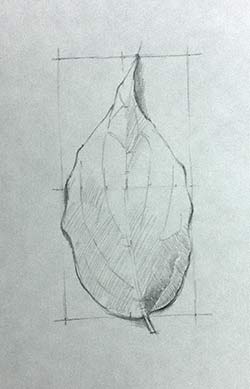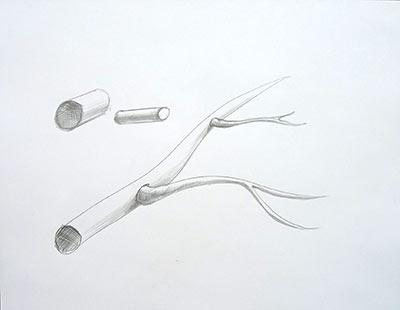
Take a closer look at your leaf.
If you were to simplify its structure, what forms would you use?
Stem and veins can be variations of a simple cylinder.
You already know how to shade a cylinder.

Note how the leaf's surface is shaped between the veins.

If you know where the light is coming from - it will become easy to shade the sections of the leaf.
Areas, that face the light source will be lighter, areas that do not get the direct light - will be darker.
Like in this simplified drawing.
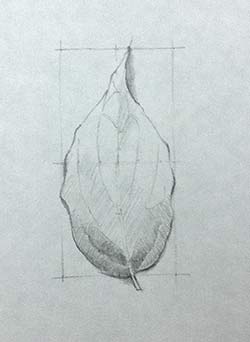
Do not outline the veins. Observe them:
- are the veins thick or thin?
- are they darker or lighter than the rest of the leaf?
- how do we see the veins - is it a vein itself or a leaf bends to create an area of contrast where the vein is?


At this point you can start shading each section of a leaf with VERY SMALL strokes.
Make sure the pencil is sharp! It is important!
Leave out the veins.
Take a closer look at each section to see how the leaf's surface bends to create lighter and darker areas.
Always consider where the light is coming from.

Work equally at each section.
This way the overall value of the leaf will be consistent
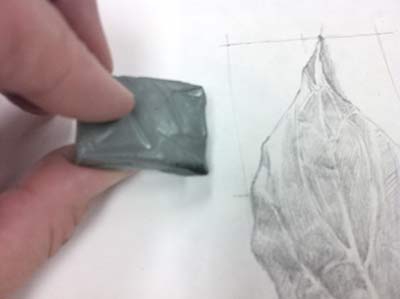
use kneaded eraser ti lighten some areas or add highlights.

Form a pointy corner and use the eraser as your drawing tool to add more details to the veins

Now that you have the veins positioned....
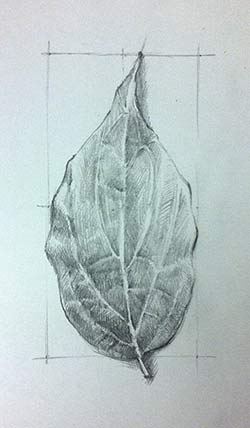
Concentrate on small areas and its details - adding more contrast to the sections.

You might want to use a paper stump (tortillon) and blend strokes lightly in a circular motion. Keep some pencil strokes visible - you don't want to make it overblended.
Once the tortillon gets some graphite on it - you can tone down some veins too - look at them - they are not exactly white. Some of them are darker than others.

Here the left side of the leaf was blended.
You can compare the two sides and see that the veins look more "in place" now.

Blend both sides.
Add final touches of shadows and highlights.
Every artist develops his or her personal drawing style. Your drawing will be different from other people drawings of the same leaf. That's OK!












